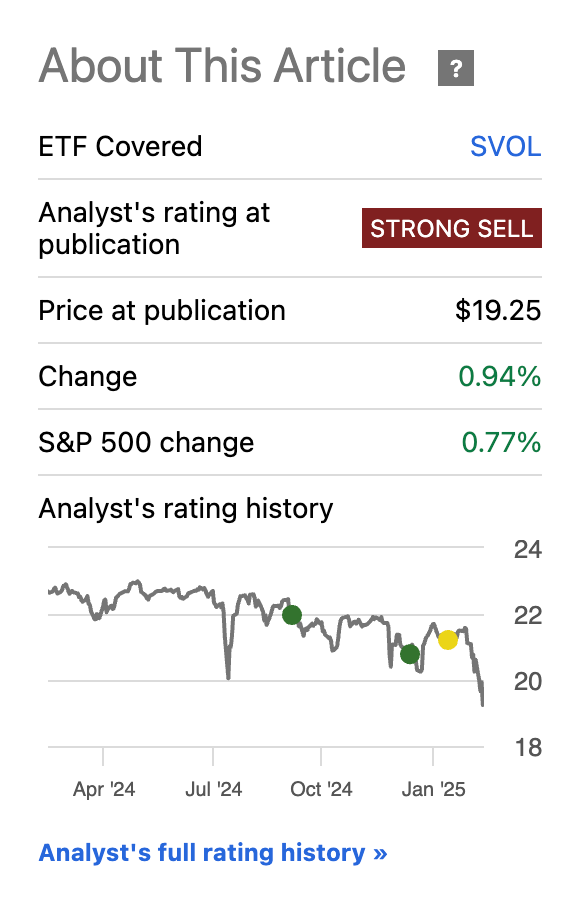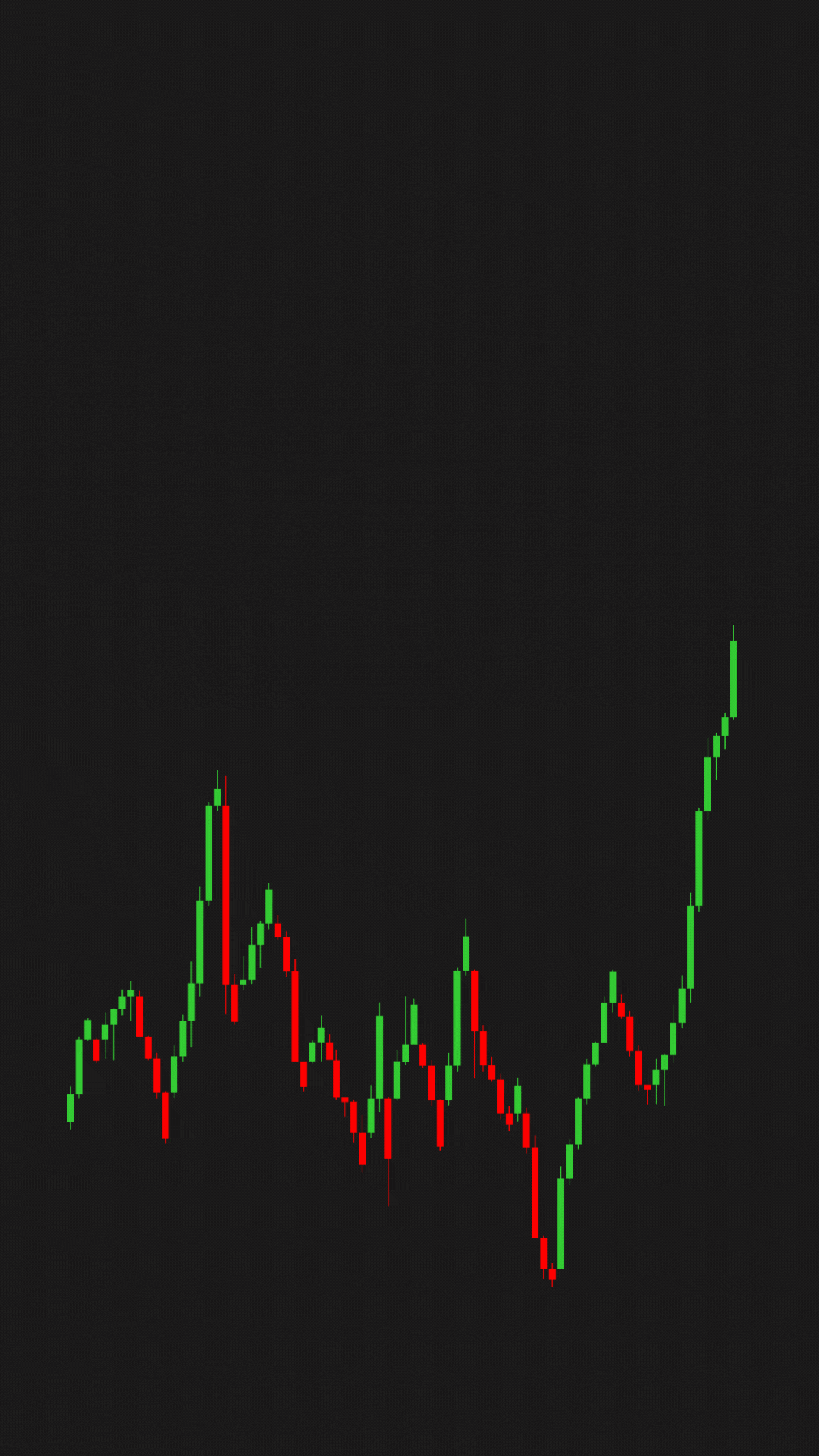
Two articles I had recently written on Seeking Alpha were “YMAX: Paying Extra Management Fees For No Good Reason” and “SVOL: Low-Quality Holdings Increase Downside Potential Significantly.”
I had given both funds, the YieldMax Universe Fund of Option Income ETFs (YMAX) and Simplify Volatility Premium ETF (SVOL), sell ratings.
Like any Seeking Alpha article with strong opinions, these two articles were met with controversy and people who disagreed with me.
And for both ETFs, the discussions made me realize that I had not really shared fundamental investment philosophies that guide my decision-making.
Both funds have indeed performed well in the past. They also offer very large dividend yields and distributions like YMAX’s current 55.55% and SVOL’s 17.65%.
With the S&P 500 down nearly 6% in just the last two weeks, some commenters have felt that my decision to place sell ratings on these two funds was an overreaction.
“Buy more, it’s the income compounding that matters.”
What I didn’t clarify enough, though, was that regardless of whether the two funds were down or up, I would have placed the sell ratings. Here’s why.
Your Reasons For Buying and How You’ll React
I grew up reading Peter Lynch’s books and his idea of “buying what you know” has become a core part of my own investment philosophies.
The core reason why I rated both funds as a sell is I cannot reasonably know how I would react if either fund were to fall or rise 50% within a month.
And I don’t just mean price; the same can be said about distributions.
My biggest qualm with YMAX is that the fund is simply a collection of single-ticker covered call funds from YieldMax.
At first glance, it seems like YMAX is a tech-related fund as you’ll get covered call exposure to investments like the magnificent seven stocks, various AI-related stocks, ARKK, cryptocurrency companies, and more.
But then all of a sudden, you have ETFs selling calls on a gold mining ETF, JPM, MRNA, and DIS.
Why?
To make matters worse, these funds are equal-weighted in YMAX. This means that money in some of the best-performing funds within YMAX are being redirected to under-performing ones.
I’m not sure I want to put my MSTY gains toward MRNY, which has dropped nearly 70% in just a year.
 MSTY Vs. MRNY Total Returns Past Year | Image From Seeking Alpha
MSTY Vs. MRNY Total Returns Past Year | Image From Seeking Alpha
And for this example specifically, I am actually invested in the Yieldmax MSTR Option Income Strategy ETF (MSTY).
I bought it because I’m looking to harvest volatility from MSTR, aka Strategy (previously known as MicroStrategy), due to its position as a leveraged Bitcoin proxy.
If price or distributions rise or drop significantly, I can reassess my position.
For me, MSTY would no longer be worth holding if Bitcoin and the company’s volatility stabilizes. This would either mean Bitcoin has become widespread and non-controversial or is on its way out.
But unless one of the two scenarios above happen, drops in price are just opportunities to reinvest, while rises in price are generally something I ignore unless they show that the fund managers have not done a good job of managing their call positions.
With MRNY, on the other hand, I have no idea what’s going on.
If MRNY continues dropping I wouldn’t know if I should buy more or cut my losses. If MRNY goes up, I wouldn’t know what to do either.
That’s because I am unfamiliar with analyzing medical stocks, specifically Moderna, which is the underlying in MRNY.
The same can be said about many other holdings in YMAX. I will not claim to be an expert in gold mining, nor am I tracking the ARKK ETF.
YMAX isn’t like thematic or index-linked funds either.
With something like the S&P 500, I can afford not to be familiar with all 500 stocks in the index because my play is on the U.S. stock market and, more specifically, large caps.
I can support my investment decision based on what’s happening in the broader economy.
The same can be said about more thematic funds. Cryptocurrency funds, for example, are heavily affected by the performance of Bitcoin so regardless of each company’s individual struggles, I can look more toward the performance of Bitcoin as a whole.
I cannot say the same about YMAX. If I were to invest in YMAX, I would need to be able to justify holding each asset within the fund and future incoming ones.
Remembering The Decisions For Your Investment
To build on the idea of knowing how to react, you must remember the decisions behind an initial investment.
Unlike YMAX, which I have never given positive ratings for, SVOL was a fund I had rated as a Buy twice before my current Sell rating.
It doesn’t look too great if you look at my rating history.
 Image From Seeking Alpha
Image From Seeking Alpha
No one wants to buy high and sell low. We’re supposed to do the opposite.
Why, then, am I rating SVOL as a Strong Sell despite rating it as a Buy before?
The reason is that the changes within SVOL have altered the fund to a state where it no longer accomplishes my original purpose for the fund.
The Buy ratings were there because SVOL offered an interesting proposition for income investors where its performance differed enough from the S&P 500 to offer some diversification.
This chart showing SVOL’s total return compared to SPY between January 2022 and December 2023 is a prime example:
 Image From Seeking Alpha
Image From Seeking Alpha
The fund’s strategy of shorting the VIX had allowed it to return over 16% during two years where the S&P 500’s total return was less than 3%.
That has unfortunately changed recently as the fund has shifted and increased its position in S&P 500-linked products significantly.
With the majority of the fund tied to the S&P 500 now in combination with its short-VIX strategy, it has lost that diversification benefit, and I can no longer justify the risk of holding this fund.
Whenever a fund or stock goes through significant changes, always remember your original thesis and reevaluate.
Is your original thesis still relevant?
If yes, buy more.
If not, does a reevaluation of the asset create a new thesis that continues to support the investment?
If not, sell.
That was the process I used with SVOL.
My original reasoning for buying SVOL as an income enhancer to diversify from popular S&P 500 covered call funds was no longer relevant because SVOL has become largely comprised of S&P 500 holdings.
Thus, I asked, “Do these changes make the fund more valuable as an income enhancer?”
And unfortunately, my answer was no. Shorting the VIX was already a move that is very correlated to the S&P 500 so holding S&P 500 assets would just be doubling down on gains and losses.
If SVOL is going to have the same performance as the S&P 500 but with more unpredictability, I could be invested in other funds such as XDTE which gives me more predictable returns relative to the S&P 500 and yields of over 20%.
Know Why You Buy What You Buy
Before you buy any investment, there must be logical reasons behind your decision. Then, you must remember those logical reasons.
Making money from the market is not necessarily about predicting the future correctly but knowing how to react in different scenarios.
If your investment rises or drops 50% tomorrow, you should know how to respond.
Sell if your original investment thesis is not relevant anymore and you can’t come up with a new thesis backed by logical reasons. Otherwise, buy or hold.
When you support your investment decisions with logic, you never lose.
You either win or learn.
Conversely, if your investments are emotionally driven and speculative, then even when you win, it’s just luck.
Of course, you might be wondering how to formulate these theses in the first place. My personal first stop when researching any investment is Seeking Alpha and you can also find some of my exclusive articles on various investments here, too.
Financial Disclaimer: The views in this article are the author’s personal views. This commentary is provided for general informational purposes only. It does not constitute financial, investment, tax, legal, or accounting advice or an offer or solicitation to buy or sell any securities referred to. Individual circumstances and current events are critical to sound investment planning; anyone wishing to act on this article should consult with their advisor. The information provided in this article has been obtained from sources believed to be reliable and is believed to be accurate at the time of publishing, but we do not represent that it is accurate or complete, and it should not be relied upon as such. Investing in stocks, bonds, exchange-traded funds, mutual funds, and money market funds involves the risk of loss. Their values change frequently, and past performance may not be repeated.
Affiliate Link Disclosure: You may assume all links in this article are affiliate links. If you purchase any product or service through the link, I may be compensated at no extra cost to you.
Originally published on Medium.com. Get a Medium membership and read articles like this one ad-free.





Leave a Reply